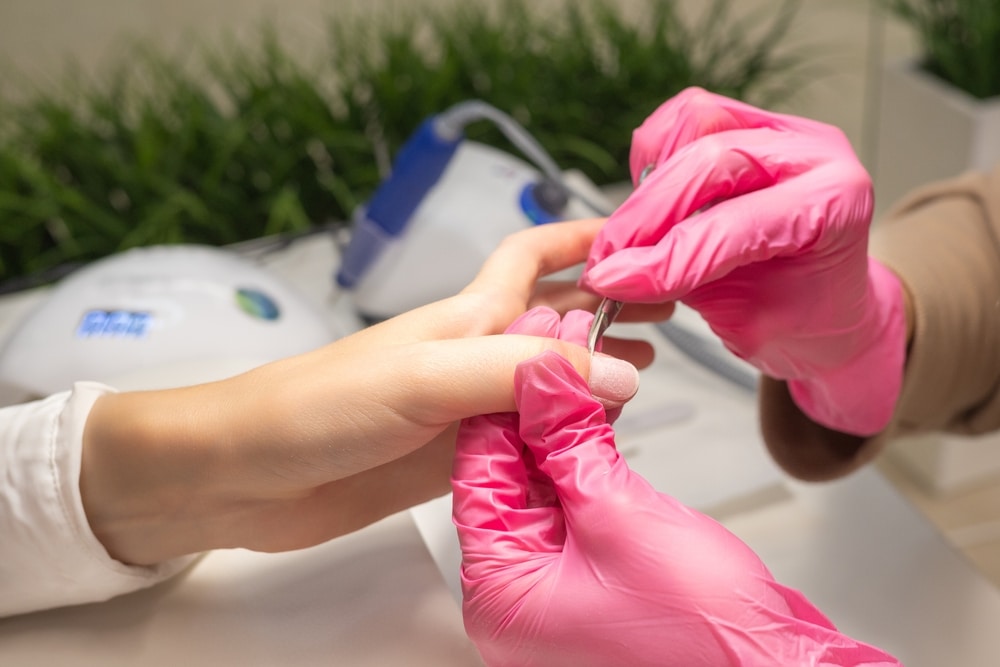Is Trimming Cuticles Bad For You? We Investigated
Your cuticles are advantageous for your nail health—they safeguard emerging nail growth and are essential in fostering strong, healthy nails. However, during manicure and pedicure sessions, it’s common for cuticles to be trimmed, an action that may result in swelling and infection risks.
Although neatly trimmed cuticles may look pleasing, experts caution for the sake of hand and foot health. We’ve consulted with Chanel Perkins, DPM, a podiatrist with double board certification and founder of FabFootDoc, and Marisa Garshick, MD, a New York-based dermatologist certified by the board at MDCS Dermatology. They shared insights on cuticle care, why it’s critical to steer clear of cutting them, and how to avoid cuticle damage entirely.
Understanding Cuticles
Dr. Garshick explains that cuticles are a slim strip of skin cell layers found at the base of our nails on fingers and toes. “Their function is to act as a protective shield, fending off bacteria, fungi, and other harmful invaders from infiltrating the nail bed, the region where new nail formation initiates,” she describes. The cuticle, made of dead epidermal cells, appears as a dense clear skin layer. “Despite appearing fragile, cuticles guard the nails during growth and bar unwanted bacteria and fungi,” states Dr. Perkins.
Caring for Your Cuticles
Moisturization is key in cuticle care, akin to the rest of your body parts. You might wonder, why are cracked cuticles troublesome? “Openings in the cuticles could become entry points for bacteria and fungi, which pose a risk of swelling, irritation, and infection—resulting in an environment that’s not suitable for nails to prosper,” Dr. Perkins mentions.
To prevent this, experts suggest using cuticle oil, like the Essie Roll-On Apricot Nail and Cuticle Oil, which can help avoid cracking and desiccation. Dr. Garshick advises, “Routinely apply cuticle oil or a rich hand lotion to retain hydration, and always wear gloves during housework or demanding tasks for protection.”
The Safety of Cutting Cuticles
Experts advise against cutting cuticles because it increases the likelihood of infections and other related complications. “Studies show that trimming cuticles compromises their defense role, boosting your risk of bacterial and fungal infiltrations,” Dr. Garshick says, similar to the effect of cuticle cracking. In salons, request your technician to carefully push back the cuticles rather than cutting, and ensure they receive adequate moisture. “Trimming is fine if they seem excessive, but avoid excessive removal,” adds Dr. Perkins.
Safe Methods for Cuticle Removal
While entirely removing cuticles is not advisable, experts favor gentle retraction techniques. “Begin by softening the skin with a warm soapy water soak. Then, using a wooden or rubber tool, nudge the cuticles back softly,” Dr. Garshick instructs. Avoid strong force to prevent injury. Finalize the process by applying cuticle oil followed by a hydrating cream for hands or feet.
Identifying Cuticle Infections
Infections can occur within cuticles, with symptoms including redness, swelling, pain, warmth, and occasionally pus discharge, as outlined by Dr. Perkins. Poor nail treatment or inadequate hygiene are often culprits. “Prompt treatment is crucial if you observe any of these signs,” Dr. Garshick suggests. For infected cuticles, immerse the impacted area in warm water multiple times a day and apply an antibiotic ointment available over-the-counter. “If the condition doesn’t improve or worsens, seek professional medical assistance,” she highlights.
Summer Care for Cuticles
In the summer, when your feet are more exposed due to sandals, swimming pools, and beaches, your cuticles are at a higher risk of infection if they’re not in good condition. Experts suggest refraining from cutting them—soften and push back instead for upkeep. Also, apply sunscreen to the cuticles when out in sandals, as recommended by Dr. Perkins. Additionally, it’s essential to use cuticle oil daily. “While oils absorb better than creams, any moisturization is better than none for cuticle health,” she remarks.
Prevention of Cuticle Damage
The key to preventing cuticle damage is to keep them moisturized and steer clear of abrasive chemicals. “Refrain from nibbling or peeling at the cuticles and nails,” Dr. Garshick adds. For nail polish removal, choose non-acetone formulations to prevent cuticle dryness.
Concluding Thoughts
Cuticles are vital for promoting nail growth; therefore, it’s crucial to nurture them with moisturizing oils and refrain from cutting. Look out for signs of infection—redness and swelling—and address them with over-the-counter antibiotics as needed. To safeguard your cuticles during summer, use sunscreens and oils, and avoid using harsh soaps and acetone to prevent them from getting dehydrated. “Maintaining healthy cuticles is pivotal for overall nail well-being,” Dr. Garshick concludes, ensuring that your nails will be much happier as a result.
















